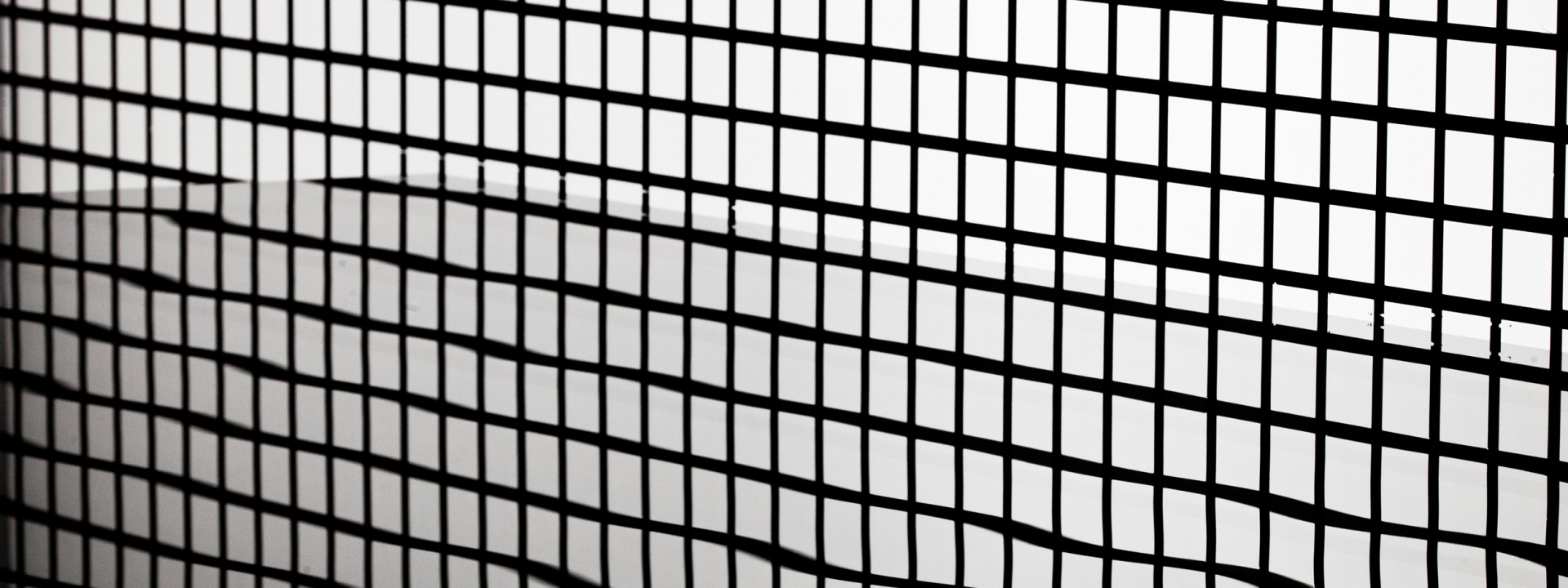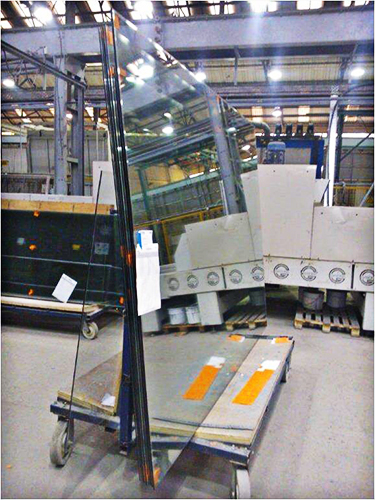
 Optical issues are becoming a critical topic in high-end façade projects. To determine how and where to fix the optical issue, it is important to understand what defect is causing the issue. In this article, I will clarify the most common optical defect – roller wave.
Optical issues are becoming a critical topic in high-end façade projects. To determine how and where to fix the optical issue, it is important to understand what defect is causing the issue. In this article, I will clarify the most common optical defect – roller wave.
There are three main reasons causing the roller wave effect: glass exit temperature from the heating section is too high, the roller pitch or shape is too large, and the oscillation speed is too low.
When tempering the glass, the right temperature is key to success. An easy rule of thumb is that the hotter the glass, the worse the quality. When the glass exit temperature gets closer to 650 ˚C, the glass itself gets softer, and is thus more prone to internal bending.
One reason for overheating is the attempt to avoid the risk of breakages. The colder the glass exits the furnace, the better the quality. However, the risk of breakage increases. In some cases, overheating may be needed to compensate for bad edge work or hole finishing.
There are differences in roller settings in tempering furnaces. When the distance between consecutive rollers is longer, the glass travels a longer distance unsupported. Longer roller pitch results in a larger peak-to-valley roller wave value, thus creating a visually more noticeable roller wave effect.
Roller shape accuracy along the whole roller length also plays an important role in roller wave quality. Better accuracy improves the overall flatness of the roller bed and thus prevents roller “vibrations” and level differences, which can greatly affect the overall roller wave values.
Faster oscillation movement in the end of the heating cycle reduces the time that the glass is without roller support, and thus improves the roller wave quality. A low oscillation speed has the opposite result.

There are specific reasons for roller wave to appear. Here are four steps to raise the quality of glass.
The single most important factor in reducing the amount of roller wave is avoiding overheating. This is achieved by better heating control in the heating section. Make sure you have the necessary measurement system to control the glass temperature after heating. The best is an infrared scanner. Additionally, a furnace with better heating control gives you a wider temperature window for working without breakages.
If you have a problem with roller wave, the first thing to do is to decrease the heating time. Another rule of thumb to practically any quality problem is to:
Decrease the furnace temperature and increase the heating time.
This increases the heating uniformity and provides stability to the glass quality.
Note! Today there are automatic systems that measure the glass quality and give automatic feedback to the system to change parameters, for example, the heating time.
This is a tricky one since this is something that is not easily controllable. This tip is only valid if you are choosing your machinery. When choosing a new tempering line, pay attention to the roller pitch. Afterwards, it is extremely challenging to change it.
What you can do with existing machinery is to check and measure the total indicated runout (TIR) of your rollers and make sure you use high-quality rollers in the process. They have a direct impact on your quality.
Note! Different manufacturers have different specifications for rollers, even if they come from the same supplier. Make sure your roll supplier provides you with high-quality rollers.
New control systems can control the conveying process more accurately and at different speeds. Since glass as material changes during the heating, it’s good to have dynamic control of the oscillation speed. For example, the Glaston iControL™ control system makes it possible to set different oscillation speeds for the various heating cycle stages to improve roller wave.
Accurate cutting, grinding and drilling processes will allow colder glasses to exit the furnace and improve your roller wave quality. Make sure your pre-processing is not a bottleneck for your tempered glass quality and yield.
Remember, roller wave is normally caused by overheating the glass. This process is easy to control – measure, adjust and verify.
Sign up for Glastory newsletter
We answer your questions about glass processing. Let us know your challenges and we promise to do our best to help you.
Dear sir
how can I avoid the shadow at the edges of 12 mm sodt coated glass
at pro e HTF 2448
The dark shadow at the edges apoeare only from out side the building when facing the sun and more visable during sunset. Glass sizes 4×2 metrs
the edges are flat polishes and no holesin the glass .
Regards
haitham khatib
Dear sir
if the customer refuses the strain pattern and anstropy do I have to replace the glass or I have to get 3rd party to solve the issue ? What if the customer still not accepting ….
regards
hautham k
This is one of the trickiest questions in our industry today. I would suggest bringing in a 3rd party to evaluate the anisotropy level. It is worth while going through the safety glass standards you used when you sold the glass (e.g. ANSI Z97.1 or EN 12150). Some of the standards state that anisotropy is not a defect. Also, if the building is just being built and there is nothing yet inside the building, I’d try to calm the client down and ask him to wait until there is furniture inside. This can totally change the lighting impact of the building.
This phenomenon sounds like anisotropy. Please refer to this article to see more about the effect itself and the reasons. What is anisotropy/iridescence and 5 ways to reduce it
How much oscillation speed
1- first speed
2- middle speed
3- last speed
What is the correct values of the speeds for 4,5mm thicknesses
There is no real limits for oscillation speed in furnace, but to get best possible quality for the tempered glass some basic rules should keep in mind.
– The first speed is usually around 50 mm/s
– Middle speed is between 75-100 mm/s
– Last speed is around 100-200 mm/s depending on the glass thickness. Faster speed for thinner glass.
– Speed distribution (when glass speed is changed to last speed) should be 60-75% also depending on the glass thickness. Smaller value for thinner glass.
I’m working on the RC 200-2-Zone
How much oscillation speed
First, middle,last speed and speed distribution for each zone.
In your case you are running tempering line with double chamber. Then for example, for 6 mm glass in Section 1, first speed should be slow 70 mm/s, middle and last speed can be slightly higher 100 mm/s. In second furnace first speed is 100 mm/s, middle speed is about 120 mm/s and last speed is 150 mm/s. Speed distribution in first section does not matter as middle and last speeds are same. In second section speed distribution is about 30%. For thicker glasses speeds can be smaller.
How much time low oscillation speed in heating section for 6mm glass